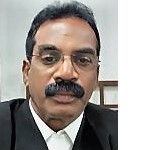54f for 64(1)(iv)
 Shweta
(Querist) 01 May 2023
This query is : Resolved
Shweta
(Querist) 01 May 2023
This query is : Resolved
Mr A and Mrs are husband and wife.
Mr A gifted shares to Mrs A worth Rs 50,000 in 2010-11
Expecting the shares to be sold in current financial year, Mr A and Mrs purchased a house property (joint ownership between Mr A and Mrs A) for Rs 5 Lakhs in March 2022. Mr A provided Rs 2 Lakhs From his personal funds and Rs 3 Lakhs through joint home loan.
Mrs A sold the shares in June 2022 for Rs 5 Lakhs which is also the long-term capital gain for her. The sale consideration from shares was credited in her account and the home loan was disposed off.
Income from sale of shares is to be shown in the ITR of Mr A after application of clubbing provisions of section 64(1)(iv)
Mr A wants to claim exemption under section 54 F for investment done by both Mr A and Mrs A, in purchase of joint property, (Mr A provided Rs 2 Lakhs from his personal funds and Rs 3 Lakhs through joint home loan which was disposed from sale consideration of shares), the money was credited in bank account of Mrs A and loan was disposed through check.
Mr A and Mrs A want to opt for co-ownership in proportion to their investment and also claim 54F for both Mr A (transferor) and Mrs A (transferee) investment.
Query - Whether or not eligibility claim of Section 54 F will be accepted by the Income Tax department regarding joint investment / joint ownership of residential house with both Mr A (transferor) and Mrs A (transferee) eligible to claim section 54F on sale of shares.
Please support with relevant case laws, if any.
 T. Kalaiselvan, Advocate
(Expert) 01 May 2023
T. Kalaiselvan, Advocate
(Expert) 01 May 2023
As per section 64(1)(iv), if an individual transfers (directly or indirectly) his/her asset (other than house property) to his or her spouse otherwise than for adequate consideration, then income from such asset will be clubbed with the income of the individual (i.e., transferor).
Clubbing of income means Income of other person included in assessee’s total income, for example: Income of husband which is shown to be the income of his wife is clubbed in the income of Husband and is taxable in the hands of the husband. Under the Income Tax Act a person has to pay taxes on his income. A person cannot transfer his income or an asset which is his one of source of his income to some other person or in other words we can say that a person cannot divert his income to any other person and says that it is not his income. If he do so the income shown to be earned by any other person is included in the assessee’s total income and the assessee has to pay tax on it.
As per Section 54F of the Income Tax Act, 1961, the long term capital gains earned by selling a capital asset except a house property can be exempted from tax subject to the given condition. The capital assets comprise bonds, gold, shares, and other such items. The condition prevails that the gains from the sale must be reinvested in either the purchase of the construction of a house property. If you meet this condition, the gains earned from the sale of the capital asset will be tax-free u/s 54F of the IT Act.
It is imperative that you understand the various terms mentioned under section 54F of the Income Tax Act, 1961, in order to reap the benefits of exemption. ‘Net Consideration’ is one such important term.
The meaning of ‘Net Consideration’ of the capital assets’ transfer is the full value’s consideration that has been accrued by transferring the capital assets as mitigated by certain expenditures that were incurred exclusively by connecting with the transfer of such capital assets.
Hence, we can say that,
Net Consideration = Expenditure - Full Value of Consideration.
 Dr J C Vashista
(Expert) 03 May 2023
Dr J C Vashista
(Expert) 03 May 2023
Although the query should have been posted in CA Club for proper opinion and advise yet senior expert Mr. T Kalaiselvan has been kind enough to oblige.
 Shweta
(Querist) 03 May 2023
Shweta
(Querist) 03 May 2023
Mr Vashista, I think you have not read the query thoroughly or may be Income Tax is not your area of practice. The query does not just involve the plain interpretation of the section of The Income Tax Act,1961. It also involves the analysis based on case laws. Hence the query is apt for Lawyers club as well as Ca Club.
The Query is still open as Mr. T Kalaiselvan has not given the specific answer to the specific Question
Mr A and Mrs A want to opt for co-ownership in proportion to their investment and also claim 54F for both Mr A (transferor) and Mrs A (transferee) investment after applying the clubbing provisions of section 64(1)(iv).
Query - Whether or not eligibility claim of Section 54 F read with section 64(1)(iv) will be accepted by the Income Tax department regarding joint investment / joint ownership of residential house with both Mr A (transferor) and Mrs A (transferee) eligible to claim section 54F on sale of shares.
 T. Kalaiselvan, Advocate
(Expert) 17 June 2023
T. Kalaiselvan, Advocate
(Expert) 17 June 2023
Your understanding of law itself is incorrect.It appear that you have misinterpreted law by clubbing tow different provisions of law together.
In my previous post of the same thread I had given a clear understanding of the different provisions of law that you have referred in your query.
It is surprising that instead of understanding the law properly you still harp on the same ill-connected question.
As per section 64(1)(iv), if an individual transfers (directly or indirectly) his/her asset (other than house property) to his or her spouse otherwise than for adequate consideration, then income from such asset will be clubbed with the income of the individual (i.e., transferor).
whereas section 54f states that "The condition prevails that the gains from the sale must be reinvested in either the purchase of the construction of a house property. If you meet this condition, the gains earned from the sale of the capital asset will be tax-free u/s 54F of the IT Act."
ption under section 54f is that "Where a residential property is jointly owned by two persons that would not preclude an assessee from claiming exemption under section 54F, as the assessee would not be hit by proviso to section 54F being not an exclusive owner of residential property."
Hope this clarification satisfies your further question
 Shweta
(Querist) 01 May 2023
This query is : Resolved
Shweta
(Querist) 01 May 2023
This query is : Resolved
 Shweta
(Querist) 03 May 2023
Shweta
(Querist) 03 May 2023
